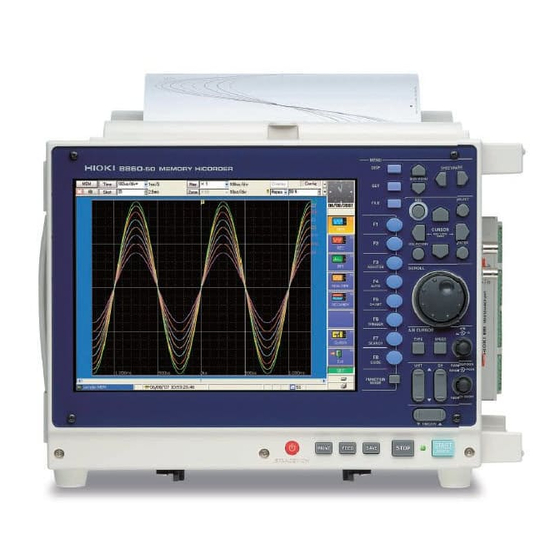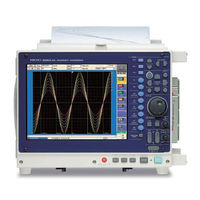
Hioki 8860 Precision Power Analyzer Manuals
Manuals and User Guides for Hioki 8860 Precision Power Analyzer. We have 3 Hioki 8860 Precision Power Analyzer manuals available for free PDF download: Instruction Manual, Manual, Quick Start Manual
Hioki 8860 Instruction Manual (500 pages)
MEMORY HiCORDER
Brand: Hioki
|
Category: Recording Equipment
|
Size: 9 MB
Table of Contents
Advertisement
Hioki 8860 Manual (114 pages)
INPUT MODULE MEMORY HiCORDER
Brand: Hioki
|
Category: I/O Systems
|
Size: 1 MB
Table of Contents
Hioki 8860 Quick Start Manual (110 pages)
MEMORY HiCORDER
Brand: Hioki
|
Category: Data Loggers
|
Size: 3 MB
Table of Contents
Advertisement


